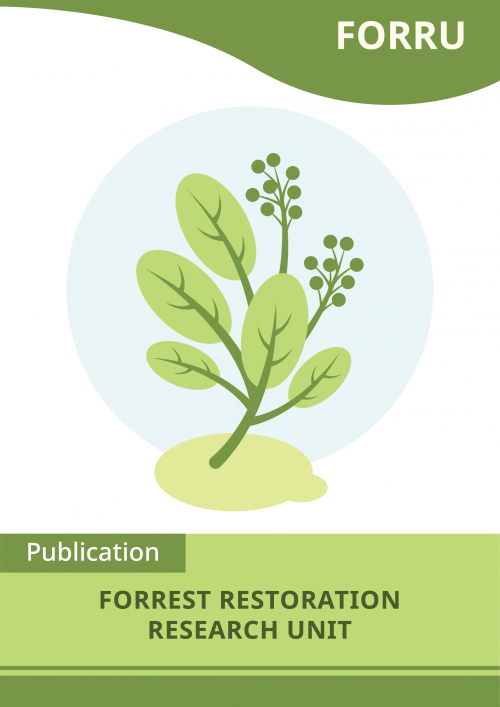Principles of restoring tropical forest ecosystems and opportunities for conserving endemic, endangered and threatened tree species
Author(s):
Elliott, S., K. Hardwick, D. Blakesley & S. Chairuangsri
Publisher:
Pp 1-5 in Ho, W.M., V. Jeyanny, H. S. Sik & C. T. Lee (Eds), Reclamation, Rehabilitation and Restoration of Disturbed Sites: planting of national and IUCN red list species. FRIM, Kuala Lumpur, Malaysia, 115 pp
Suggested Citation:
Elliott, S., K. Hardwick, D. Blakesley & S. Chairuangsri, 2017. Principles of restoring tropical forest ecosystems and opportunities for conserving endemic, endangered and threatened tree species. Pp 1-5 in Ho, W.M., V. Jeyanny, H. S. Sik & C. T. Lee (Eds), Reclamation, Rehabilitation and Restoration of Disturbed Sites: planting of national and IUCN red list species. FRIM, Kuala Lumpur, Malaysia, 115 pp (seminar proceedings).
ABSTRACTRestoring tropical forest ecosystems involves manipulating natural regeneration to achievethe maximum biomass, structure, biodiversity and ecological functioning that are possiblewithin climatic and edaphic limitations. A nearby remnant of least-disturbed forest should beselected as the “target forest ecosystem” to set restoration goals and to provide a seed source. In the seasonally dry tropics, a regenerant 1 density of 3,086/ha is needed to initiate canopy closure within two years. If regenerants are present at higher densities and they are not suppressed by weeds, protection alone can achieve restoration. However, if herbaceous weeds suppress regenerants, protection must be complemented with weeding and/or fertilizer application (assisted natural regeneration, ANR). Where regenerant density < 3,086/ha, protection and ANR must be complemented with tree planting. Where incoming seed dispersal from remnant forest remains possible, only a few “framework tree species” need be planted i.e. representative species of the target forest type that i) survive and grow well on deforested sites, ii) have dense, spreading crowns to shade out weeds and iii) attract seed dispersing wildlife. Where such seed dispersal is not possible, all tree species of the target forest ecosystem must be planted (maximum diversity methods). Where top soil is lacking, planting “nurse” trees to improve soil structure and nutrient levels (e.g. Ficus & legumes) must precede other restoration procedures.Re-introduction of endemic, endangered or threatened tree species can be included in all ofthe above techniques. Focusing only on red listed tree species is not particularly useful, sincesuch lists are incomplete and fail to recognize local rarity. Restorationists should ensure thatthe rarest tree species in the target forest recolonize restoration sites, usually by tree planting. The greatest barrier to the use of rare species in forest restoration is low seed availability. Partnerships between restorationists and botanical gardens and/or seed banks may be crucial to ensure rare species are represented in restoration projects.



